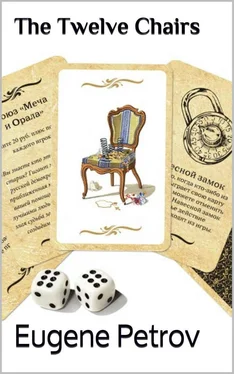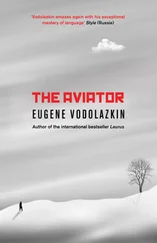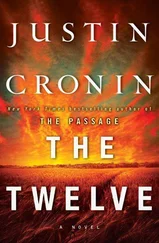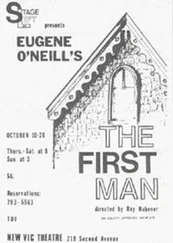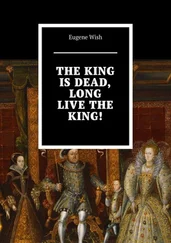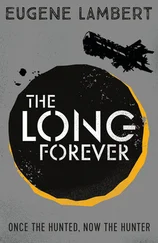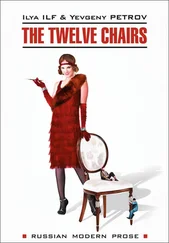Eugene Petrov - The Twelve Chairs
Здесь есть возможность читать онлайн «Eugene Petrov - The Twelve Chairs» весь текст электронной книги совершенно бесплатно (целиком полную версию без сокращений). В некоторых случаях можно слушать аудио, скачать через торрент в формате fb2 и присутствует краткое содержание. Год выпуска: 2013, Жанр: Юмористическая проза, на английском языке. Описание произведения, (предисловие) а так же отзывы посетителей доступны на портале библиотеки ЛибКат.
- Название:The Twelve Chairs
- Автор:
- Жанр:
- Год:2013
- ISBN:нет данных
- Рейтинг книги:5 / 5. Голосов: 1
-
Избранное:Добавить в избранное
- Отзывы:
-
Ваша оценка:
- 100
- 1
- 2
- 3
- 4
- 5
The Twelve Chairs: краткое содержание, описание и аннотация
Предлагаем к чтению аннотацию, описание, краткое содержание или предисловие (зависит от того, что написал сам автор книги «The Twelve Chairs»). Если вы не нашли необходимую информацию о книге — напишите в комментариях, мы постараемся отыскать её.
Find traces of a separate headset difficult and heroes face different adventures and troubles.
The Twelve Chairs — читать онлайн бесплатно полную книгу (весь текст) целиком
Ниже представлен текст книги, разбитый по страницам. Система сохранения места последней прочитанной страницы, позволяет с удобством читать онлайн бесплатно книгу «The Twelve Chairs», без необходимости каждый раз заново искать на чём Вы остановились. Поставьте закладку, и сможете в любой момент перейти на страницу, на которой закончили чтение.
Интервал:
Закладка:
different nationalities; while one is a Russian (the enigmatic Russian
soul), the other is a Jew (the enigmatic Jewish soul).
The literary partnership lasted for ten years, until 1937, when Ilya
Ilf died of tuberculosis. Yevgeny Petrov was killed in 1942 during the siege
of Sebastopol.
The two writers are famed chiefly for three books-The Twelve Chairs
(1928; known in a British translation as Diamonds to Sit On); The Little
Golden Calf (1931), a tale of the tribulations of a Soviet millionaire who
is afraid to spend any money lest he be discovered by the police; and
One-Storey-High America (1936; known in a British translation as Little
Golden America), an amusing and, on the whole, friendly account of the two
writers' adventures in the land of Wall Street, the Empire State Building,
cars, and aspiring capitalists.
The plot of The Twelve Chairs is very simple. The mother-in-law of a
former nobleman named Vorobyaninov discloses on her deathbed a secret: she
hid her diamonds in one of the family's chairs that subsequently was
appropriated by the Soviet authorities. Vorobyaninov is joined by a young
crook named Ostap Bender with whom he forms a partnership, and together they
proceed to locate these chairs. The partners have a competitor in the priest
Vostrikov, who has also learned of the secret from his dying parishioner.
The competing treasure-hunters travel throughout Russia, which enables the
authors to show us glimpses of little towns, Moscow, and Caucasian resorts,
and also have the three central characters meet a wide variety of people
-Soviet bureaucrats, newspapermen, survivors of the pre-revolutionary
propertied classes, provincials, and Muscovites.
The events described in the novel are set in 1927, that is, toward the
end of the period of the New Economic Policy, which was characterized by a
temporary truce between the Soviet regime's Communist ideology and limited
private enterprise in commerce, industry and agriculture. The coffin-making
and bagel-making businesses referred to in the novel have long since been
nationalized; the former noblemen masquerading as petty Soviet employees and
many of the colleagues of the priest described by Ilf and Petrov are no
longer alive; and it is impossible to imagine the existence today of an
anti-Soviet "conspiracy" similar to the humorists' "Alliance of the Sword
and Ploughshare".
Other than that, however, the Soviet Union described in the novel is
very much like the Soviet Union of 1960, industrial progress and the
Sputniks notwithstanding. The standard of living in 1927 was relatively
high; it subsequently declined. Now it is just slightly higher than it was
thirty years ago. The present grotesquely overcrowded and poor-quality
housing (there is not even a Russian word for "privacy" I) is not much
different from the conditions Ilf and Petrov knew. There are now, as there
were then, people to whom sausage is a luxury, as it was to the newlyweds in
The Twelve Chairs. Embezzlers of state property, though denounced as
"survivals of the capitalist past", are found by thousands among young men
in their thirties and forties. The ominous door signs protecting Communist
bureaucrats, from unwanted visitors still adorn Soviet offices. Nor has the
species of Ellochka the Cannibal, the vulgar and greedy wife of a
hardworking engineer, become extinct. And there are still multitudes of
Muscovites who flock to museums to see how prosperously the bourgeoisie
lived before the Revolution-Muscovites who are mistaken for art lovers by
unsuspecting Western tourists who then report at home a tremendous Soviet
interest in the fine arts. Why, even the ZAGS remains unchanged; only a few
months ago Komsomolskaya Pravda, a youth newspaper, demanded that something
be done about it, because brides and grooms are embarrassed when the
indifferent clerk inquires whether they came to register a birth, a death,
or wish to get married-just as Ippolit Matveyevich Vorobyaninov did over
thirty years ago in the little Soviet town deep in the provinces.
Similarly, the "poet" Lapis who peddled nearly identical verse to
various trade publications-providing his hero Gavrila with different
professions such as chemist, postman, hunter, etc., to give the poem a
couleur local suitable for each of the journals- enjoys excellent health to
this day. There are hundreds of recent Soviet novels, poems and dramas
written by as many Soviet writers which differ only in the professions of
their protagonists; in their character delineations and conflicts they are
all very much alike. And, finally, the custom of delivering formal political
speeches, all of them long, boring, and terribly repetitious, persists to
our times. These speeches are still a regular feature at all public events
in the USSR.
Thus the Western reader, in addition to being entertained, is likely to
profit from the reading of The Twelve Chairs by getting a glimpse of certain
aspects of daily life in the Soviet Union which are not normally included in
Intourist itineraries.
The hero of The Twelve Chairs (and also, it might be added, of The
Little Golden Calf) is Ostap Bender, "the smooth operator", a resourceful
rogue and confidence man. Unlike the nobleman Vorobyaninov and the priest
Vostrikov, Bender is not a representative of the ancient regime. Only
twenty-odd years old, he does not even remember pre-revolutionary Russia: at
the first meeting of the "Alliance of the Sword and Ploughshare" Bender has
some difficulty playing the role of a tsarist officer. Ostap Bender is a
Soviet crook, born of Soviet conditions and quite willing to co-exist with
the Soviet system to which he has no ideological or even economic
objections. Ostap Bender's inimitable slangy Russian is heavily spiced with
cliches of the Communist jargon. Bender knows the vulnerabilities of Soviet
state functionaries and exploits them for his own purposes. He also knows
that the Soviet Man is not very different from the Capitalist Man-that he is
just as greedy, lazy, snobbish, cowardly and gullible-and uses these
weaknesses to his, Ostap Bender's, advantage. And yet, in spite of Ostap
Bender's dishonesty and lack of scruples, we somehow get to like him. Bender
is gay, carefree and clever, and when we see him matching his wits with
those of Soviet bureaucrats, we hope that he wins.
In the end Ostap Bender and his accomplices lose; yet, strangely
enough, the end of the novel seems forced, much like the cliche happy ending
of a mediocre Hollywood film. One must understand, however, that even in the
comparatively "liberal" 1920s it was difficult for a Soviet author not to
supply a happy Soviet ending to a book otherwise as aloof from Soviet
ideology as The Twelve Chairs. And so, at the end of the novel, one of the
greedy fortune-hunters is killed by his partner, while the other two end up
in a psychiatric ward. But at least Ilf and Petrov have spared us from
seeing Ostap Bender contrasted with a virtuous upright Soviet hero, and for
this we must be grateful. Much as in Gogol's Inspector General and Dead
Souls and in the satires of Saltykov-Shchedrin, we observe with fascination
a Russia of embezzlers, knaves and stupid government officials. We
understand their weaknesses and vices, for they are common to all men.
Indeed, we can even get to like these people, as we could not like the
stuffy embodiments of Communist virtues who inhabit the great majority of
Читать дальшеИнтервал:
Закладка:
Похожие книги на «The Twelve Chairs»
Представляем Вашему вниманию похожие книги на «The Twelve Chairs» списком для выбора. Мы отобрали схожую по названию и смыслу литературу в надежде предоставить читателям больше вариантов отыскать новые, интересные, ещё непрочитанные произведения.
Обсуждение, отзывы о книге «The Twelve Chairs» и просто собственные мнения читателей. Оставьте ваши комментарии, напишите, что Вы думаете о произведении, его смысле или главных героях. Укажите что конкретно понравилось, а что нет, и почему Вы так считаете.
